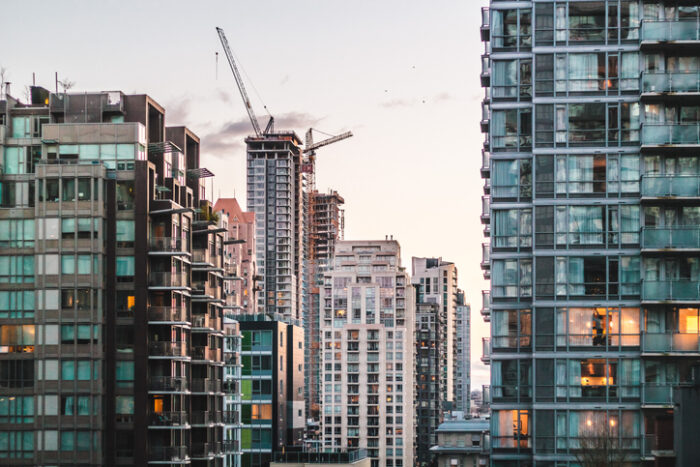Insights
High speed trains: The answer to Australia’s housing affordability crisis?
Published
13 February, 2025

Soaring property prices in major cities, traffic congestion and an increasing number of people relocating to regional areas. Australia’s affordability crisis has made it clear that the current system isn’t working. And one solution, popular around the world but seemingly ignored Down Under, is high speed rail (HSR).
Think about it: connecting regional areas to city centres with fast and efficient transport. It’s not just a topic for water cooler chats, it’s a legitimate idea that has proven itself around the world. It mightn’t be the silver bullet to end the housing affordability crisis here in Australia, but HSR could be a huge step toward balancing housing affordability, lifestyle and economic growth.
High speed rail: a global standard, except in Australia
High speed trains have proven themselves as a solution for growing populations all around the world, from Europe to Asia to North America. You couldn’t imagine countries like Japan, China, France or Spain without their extensive HSR networks. Not to mention the resulting congestion it relieves on their roads and the economic growth that flows into their regional towns.
China’s high speed rail network is the biggest in the world, with over 40,000 km of track (built in just 15 years). It has seriously cut travel times between major cities, reduced road congestion and boosted property values in regional areas.
Meanwhile in France, the TGV network connects regional cities with Paris in under two hours, making commuting feasible from faraway regions. Think about what this does for city employees who want to access modestly priced real estate in regional areas.
But despite its vast landscapes, Australia has no HSR system. And the distances between its major cities and growing regional populations are in most cases far bigger than anywhere else in the world that has embraced high speed trains.
Rising congestion in Australian capital cities

Traffic congestion in Australia’s major cities is only getting worse. The average Australian spends 40 to 60 hours stuck in traffic each year, with Sydney, Melbourne and Brisbane consistently ranking among the most gridlocked cities in the world. Without intervention, these numbers will keep rising as population growth puts increasing pressure on infrastructure.
A HSR network would provide a sustainable alternative to car and air travel, reducing reliance on congested highways.
Population growth and the shift to regional areas
Australia’s population is expected to grow to nearly 40 million by 2066, with most of the growth concentrated in Melbourne, Sydney and Brisbane. But more working Aussies are leaving the inner cities for regional towns and fringe suburbs:
According to the Regional Australian Institute, during the 2011-2016 census period, over 614,000 people moved from capital cities to regional areas, marking an increase of 120,750. Sydney and Melbourne led this trend, with Sydney losing a net 110,180 residents to regional Australia and Melbourne following with 81,857.
The key issue? Infrastructure hasn’t kept up. Many regional areas lack reliable transport connections, making commuting long, expensive and frustrating. High speed rail could remove these barriers, allowing workers to live in affordable regional housing while keeping easy access to city jobs.
The great Australian dream
“A house with a backyard.” You can hear the words said in an Aussie drawl. Unlike many developed nations where apartment living can be the norm, Australians have long been conditioned to aspire to a big house with a backyard. The push towards high-density inner-city living has been met with resistance, as families prefer space and outdoor areas.

If Australia keeps this housing trend—which, let’s face it, it will—HSR could be the missing piece of the puzzle. It’d let property owners enjoy the best of both worlds: a spacious home with outdoor space and a quick, comfy commute to work.
Alleviating housing price surges in the inner city
So, this is the major selling point for HSR in a time of unprecedented housing prices, an era which is making “young home owner” an outdated term; its ability to alleviate artificial price surges in inner city property markets.
One of the key drivers of rising house prices in Sydney and Melbourne is the concentration of demand in a few desirable, well-connected suburbs. If regional towns became viable commuting options, pressure on inner-city real estate would ease, slowing rapid price increases and spreading economic growth across a larger area.
A well-designed HSR system would reduce the dependency on inner-city housing, making home ownership more achievable for young Australians. And instead of seeing more apartment buildings flood suburbias, home owners could still keep their houses and backyards.
The missing middle
Australia suffers from a missing middle. What does that mean? There’s a stark contrast between high-density apartments in city centres (the middle) and low-density detached homes in the suburbs. There’s little in between, leaving a tonne of Australians priced out of both markets.
Back to our potential solution. A functioning HSR network could create a new middle ground—regional commuter towns that provide affordable housing with efficient transport links.
The path forward
It’s 2025 and there are discussions of a network on the east coast. The idea to connect Sydney, Brisbane and Melbourne, along with a number of regional towns, is being presented to the government but no great steps have been made.

The thing is, Australia’s debated high speed rail for decades, yet no major project’s materialised. With worsening congestion, skyrocketing property prices and increasing regional migration, those who run our country could kick major goals with a well-planned HSR system.
High speed trains could transform Australia’s housing market and create a more sustainable, affordable and connected future. It mightn’t be the only thing required to solve Australia’s housing affordability crisis. But it’d go a long, long way to help it.
Properties & Pathways is a leading commercial and residential property syndicator in Australia. Our priority is our investors, ensuring the highest quality investments and the most transparent communication.
Subscribe to our Investment Updates for exclusive alerts about our next property investment opportunities.



